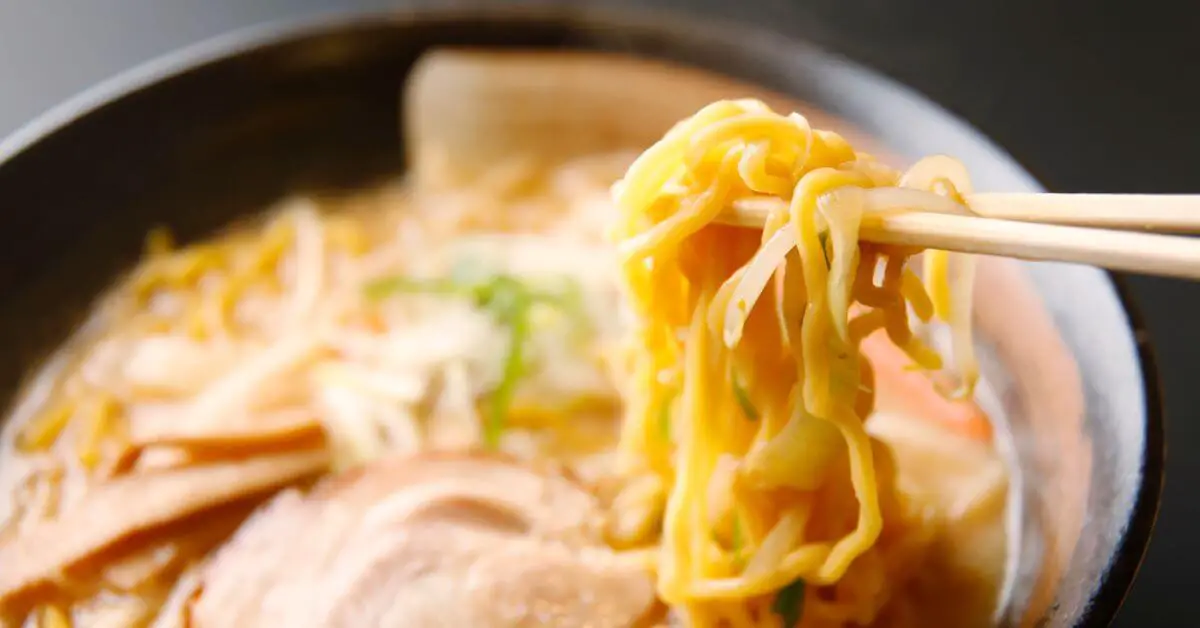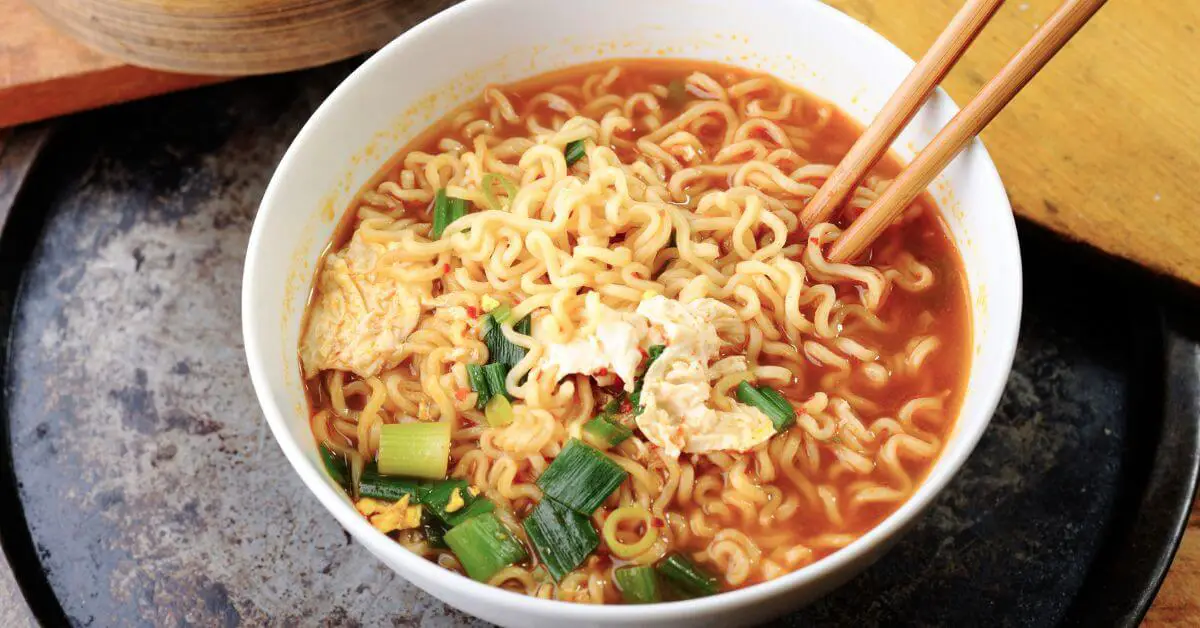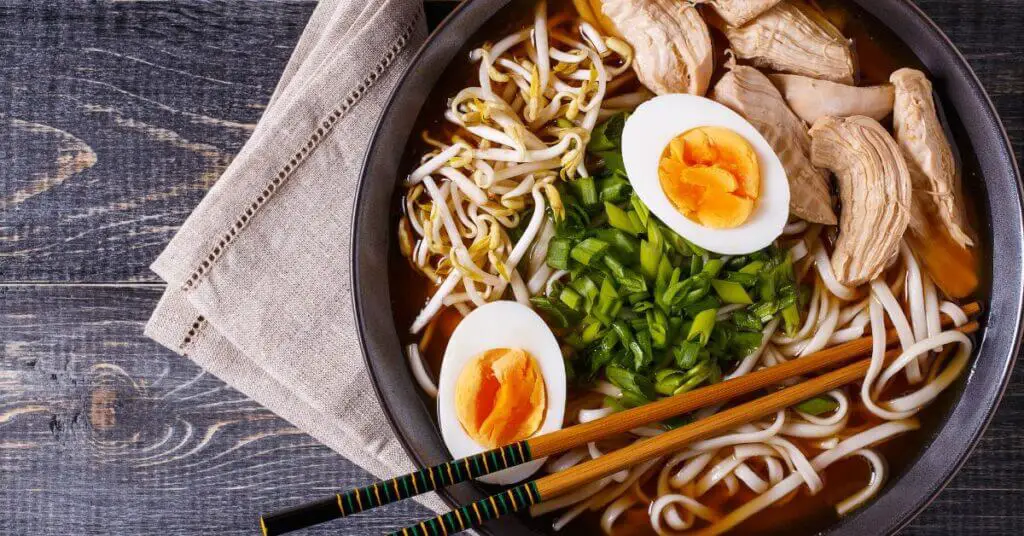Birria Ramen is a captivating fusion of Mexican and Japanese culinary traditions, blending the spicy, savory flavors of Birria—a traditional Mexican stew—with the comforting essence of Japanese Ramen. This innovative dish is a testament to the creativity of modern fusion cuisine, offering a unique taste experience that has gained widespread popularity.
At its core, Birria Ramen recipe is about harmonizing the rich, hearty elements of Birria, typically made with slow-cooked goat or beef, with the delicate, umami-rich broth and chewy noodles characteristic of Ramen. The result is a comforting, flavorful bowl that satisfies with every spoonful.
For those eager to explore the origins of this dish, delving into the histories of Mexican Cuisine and Japanese Ramen can provide valuable context. Birria Ramen isn’t just a meal; it’s a culinary adventure that bridges continents and cultures.
The History and Evolution
The story of Birria Ramen recipe is a fascinating tale of culinary evolution. Birria, originally a celebratory dish from the Mexican state of Jalisco, is known for its rich, spicy broth and tender, slow-cooked meat. Traditionally made with goat or beef, Birria has been a staple in Mexican cuisine for generations. On the other side of the world, Ramen, a dish with Chinese origins, was embraced and transformed by the Japanese into the beloved noodle soup we know today.
The fusion of these two dishes into Birria Ramen is a relatively recent phenomenon, gaining momentum in the culinary world around the early 21st century. This innovative dish reflects the growing trend of fusion cuisine, where chefs and home cooks alike experiment with combining elements from different culinary traditions to create something new and exciting.
The rise of Birria Ramen recipe can be attributed to the global movement of cultural and culinary exchange. As people travel and migrate, they bring their food traditions with them, leading to the blending of flavors and techniques. This has resulted in dishes like Birria Ramen, which marry the savory depth of Mexican stews with the comforting warmth of Japanese noodle soups.
For those interested in the historical aspects of these cuisines, resources on Fusion Cuisine and the Culinary Arts offer valuable insights into how dishes like Birria Ramen come to life. The evolution of Birria Ramen recipe is not just a culinary development; it’s a testament to the ongoing dialogue between different food cultures, creating a delicious testament to global interconnectedness.
Key Ingredients of Birria Ramen

List of essential ingredients
Creating Birria Ramen involves a harmonious blend of ingredients from both Mexican and Japanese culinary traditions. Here’s a list of essential ingredients that form the backbone of this unique dish:
- Meat: Traditionally, Birria is made with goat meat, but variations include beef (commonly chuck or brisket) or lamb. Each type of meat offers a distinct flavor and texture, with beef being more widely used due to its accessibility and rich taste.
- Dried Chiles: Integral to Birria’s flavor, dried chiles like chiles de árbol and ancho chiles provide a deep, smoky heat. The type and quantity of chiles can be adjusted based on desired spice levels.
- Spices: A blend of cumin, oregano, paprika, and garlic powder is commonly used. These spices contribute to the stew’s aromatic and savory depth.
- Broth: The base of the soup, typically made from beef or chicken bones, infused with the flavors of the meat and spices.
- Ramen Noodles: The type of noodle used in traditional Japanese ramen, known for its chewy texture. They absorb the flavors of the broth well, making them an ideal choice for this fusion dish.
- Garnishes: Fresh cilantro, diced onions, and lime wedges are common toppings that add freshness and balance to the rich and spicy broth.
- Vegetable Oil: Used for searing the meat, it helps in developing a rich flavor base for the broth.
- Onion and Garlic: These aromatics are sautéed and form part of the base flavor in the broth.
- Lime Juice: Often used both in the broth and as a garnish, it adds a tangy brightness that cuts through the richness of the dish.
Variations in Meat Choices
While goat meat is traditional in Birria, the dish has evolved with various meat choices:
- Beef: Offers a rich, hearty flavor and is widely preferred for its tenderness and availability.
- Lamb: Brings a unique, slightly gamey flavor, making it a choice for those looking for an authentic experience.
- Chicken: A lighter alternative, chicken can be used for a less intense version of the dish, suitable for those who prefer milder flavors.
Each meat choice brings its unique characteristics to the dish, allowing for personalization based on individual taste preferences and dietary restrictions.
Step-by-Step Cooking Guide
Detailed Preparation Method
Creating Birria Ramen is a culinary adventure that rewards patience and attention to detail. Here’s a step-by-step guide to crafting this flavorful dish:
- Preparation of Chiles:
- Toast dried chiles (chiles de árbol and ancho chiles) in a dry pan until fragrant. Remove stems and seeds.
- Soak the toasted chiles in hot water for 10-15 minutes.
- Blend the softened chiles into a smooth paste.
- Meat Preparation:
- Season your choice of meat (beef, goat, or lamb) with salt and pepper.
- In a large pot or Dutch oven, heat vegetable oil over medium-high heat.
- Sear the meat on all sides until browned, then set aside.
- Making the Broth:
- In the same pot, sauté chopped onions and garlic until softened.
- Add the chile paste, cumin, oregano, paprika, and garlic powder. Cook for 1-2 minutes until fragrant.
- Pour in beef or chicken broth and bring to a simmer.
- Return the seared meat to the pot. Cook for 2-3 hours or until the meat is tender and falls apart easily.
- Preparing Ramen Noodles:
- Cook the ramen noodles according to package instructions, then drain and rinse with cold water.
- Assembling the Dish:
- Shred the cooked meat and set aside.
- Strain the broth through a fine mesh strainer to remove solids.
- In serving bowls, place cooked noodles, ladle hot broth over them, and top with shredded meat.
- Garnish with cilantro, diced onions, and a squeeze of lime juice.
Tips for Achieving the Best Flavor
- Quality of Ingredients: Use fresh, high-quality ingredients for the best flavor. This includes the meat, chiles, and spices.
- Slow Cooking: Allow the meat to cook slowly and gently. This not only tenderizes the meat but also allows flavors to develop and meld together.
- Balance of Flavors: Adjust the seasoning as you cook. The right balance of salt, spice, and acidity is key to a flavorful broth.
- Toast Chiles: Toasting the chiles before soaking them releases their oils and enhances their flavor.
- Fresh Toppings: Use fresh cilantro, onions, and lime for garnishing. They add a refreshing contrast to the rich and spicy broth.
- Experiment with Toppings: Feel free to experiment with additional toppings like radishes, queso fresco, or avocado for added texture and flavor.
- Resting the Broth: If time allows, let the broth rest for a few hours or overnight after cooking. This helps deepen the flavors even more.
Following these steps and tips will help you create a Birria Ramen that is rich in flavor, offering a delightful fusion of Mexican and Japanese culinary traditions. For a more detailed guide on preparing this dish, visit our comprehensive How to Make Birria Ramen page.
Health and Nutrition
Birria Ramen, while indulgent, also holds nutritional value that varies based on its ingredients. The meat, whether beef or goat, is a good source of protein, essential for muscle repair and growth. The spices, including cumin and oregano, not only add flavor but also contain antioxidants, which are beneficial for health.
However, it’s important to consider dietary preferences and restrictions. For those with gluten sensitivities, the traditional ramen noodles might pose a challenge. In such cases, exploring gluten-free noodle options can be a viable alternative. Additionally, the dish’s calorie content, primarily from the meat and broth, should be considered for those monitoring their intake.
Understanding the nutritional aspects of Birria Ramen helps in making informed choices, especially for those who are health-conscious. While enjoying this flavorful dish, being mindful of portion sizes and the balance of ingredients can contribute to a healthier dining experience. Curious about the health aspects of similar dishes? Our article on Are Birria Tacos Healthy? provides insightful information on this popular Mexican dish.
Serving and Toppings

Serving Birria Ramen is an art in itself, with various toppings and garnishes enhancing its flavor and appeal:
- Cilantro: This fresh herb adds a bright, zesty flavor.
- Diced Onions: They provide a crunchy contrast to the tender meat.
- Lime Wedges: A squeeze of lime juice brightens up the dish.
- Radishes: Thinly sliced radishes add a crisp texture.
- Queso Fresco: This crumbly cheese brings a salty tang.
- Avocado: It offers a creamy element, balancing the spiciness.
These toppings not only add layers of flavor but also make each bite a new experience. The beauty of Birria Ramen recipe lies in its versatility; one can customize it to their taste preferences. Whether it’s adding extra spice or a creamy element like avocado, each addition creates a unique flavor profile. For more inspiration on creative toppings, exploring Ramen Toppings on Pinterest can provide a plethora of ideas.
Serving Birria Ramen is about creating a balance between the rich broth, chewy noodles, and the array of toppings. Each element plays a crucial role in crafting a dish that’s not only delicious but also visually appealing.
Regional Variations
Birria Ramen, like many dishes, has undergone regional adaptations, resulting in various interpretations across different areas. In some regions, the type of meat used might vary, with some preferring lamb over beef or goat. The level of spiciness can also differ, with some areas favoring a milder version of the dish.
These regional variations are a testament to the dish’s adaptability and the creativity of those who prepare it. They reflect the local tastes and available ingredients, making Birria Ramen a versatile dish that can be enjoyed in numerous ways.
For those interested in exploring different Mexican food varieties, resources like Mexican Food on Pinterest offer a glimpse into the diverse culinary landscape of Mexico. Similarly, for a deeper understanding of how regional preferences influence noodle dishes, the various Types of Noodles detailed on Wikipedia provide valuable insights.
The regional adaptations of Birria Ramen not only add to its richness but also invite food enthusiasts to explore and experiment with the dish, adapting it to their local flavors and ingredients.
FAQ
-
What is Birria Ramen?
- Birria Ramen combines traditional Mexican Birria stew’s rich, spicy flavors with classic Japanese Ramen. This fusion dish typically features tender meat like beef or goat, a spice-infused broth, ramen noodles, and is garnished with fresh toppings such as cilantro and onions.
-
How does one make Birria Ramen?
- To prepare Birria Ramen, cook a Birria stew with meat, chiles, and spices. Shred the tender meat and add it to a broth made from the stew’s liquid. Separately cook ramen noodles and combine them with the broth. Garnish with cilantro, lime, and onions before serving.
-
What type of meat goes into Birria Ramen?
- While traditional Birria uses goat meat, beef is more common in Birria Ramen for its rich flavor and availability. Alternatively, lamb can also be used.
-
Is Birria Ramen a spicy dish?
- The spice level of Birria Ramen varies depending on the chiles used. It typically ranges from mild to medium but can be adjusted to suit personal taste preferences.
-
Can you make Birria Ramen vegetarian?
- Yes, you can adapt Birria Ramen for vegetarians. Substitute the meat with vegetables or tofu and use vegetable broth. Maintain the authentic flavor by using the key spices and chiles.
Conclusion
In essence, Birria Ramen recipe is more than just a dish; it’s a vibrant fusion of Mexican and Japanese culinary cultures. Its rich flavors and comforting warmth make it a standout in the world of fusion cuisine. Whether you’re experimenting with it in your kitchen or savoring it at a restaurant, Birria Ramen offers a unique and delightful experience.
This dish not only satisfies the palate but also symbolizes the beautiful blend of diverse culinary traditions. So, embrace the adventure of making Birria Ramen, and enjoy the delicious harmony of flavors it brings to your table.
